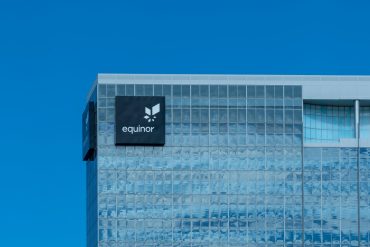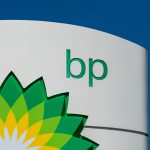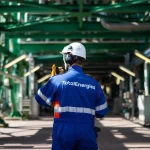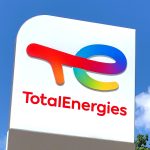
Equinor Misses Q2 Profit Target as Production, Prices Decline
6 minute read

Norwegian energy giant Equinor sees production declines and maintenance disruptions drive significant profit shortfall in second quarter
Key Takeaways
- Equinor misses Q2 profit expectations by 5% as adjusted operating income after tax falls short of the $1.9 billion consensus estimate due to declining production and lower commodity prices
- Production drops significantly across segments with liquids down 0.8% and gas production falling 12.6% compared to the previous quarter, well below analyst expectations
- Share price declines 10.4% year-to-date as operational challenges and maintenance shutdowns impact investor confidence in the Norwegian energy giant
Introduction
Norwegian energy major Equinor faces mounting pressure as second-quarter results reveal a significant shortfall from analyst expectations. The company’s adjusted operating income after tax missed consensus estimates by 5%, falling short of the anticipated $1.9 billion target. This underperformance stems from decreased production volumes and declining commodity prices across multiple business segments.
The earnings miss highlights broader operational challenges facing the energy sector, particularly as companies navigate maintenance schedules and volatile market conditions. Equinor’s struggles reflect industry-wide headwinds that continue to impact traditional energy producers despite strong underlying demand fundamentals.
Key Developments
Production data through May showed concerning trends across Equinor’s core operations. Liquids production declined 0.8% while gas production dropped 12.6% compared to the previous quarter. These figures fell well below consensus expectations, which had anticipated a 5.4% increase in liquids and only a 6.5% decline in gas production.
The period marked several operational milestones, including the startup of the Johan Castberg field and a scheduled turnaround at the Hammerfest LNG plant beginning April 24. However, these positive developments were overshadowed by maintenance-related disruptions that reduced output by approximately 65,000 barrels of oil equivalent per day, a significant increase from the 20,000 barrel reduction in the first quarter.
Realized liquid prices in the Exploration and Production Norway segment ranged from $64.8 to $66.8 per barrel, declining from $73.8 in the first quarter. Gas prices reached $10.6 per million British thermal units, slightly above consensus but down from $12.6 in the previous quarter.
Market Impact
Equinor’s share price has fallen 10.4% year-to-date, reflecting investor concerns about operational reliability and commodity price exposure. The company’s market capitalization stands at NOK757.8 billion, or $75.3 billion, based on recent closing prices.
European gas markets contributed to the company’s challenges, with milder temperatures dampening demand and reducing prices. The Dutch TTF front-month gas contract averaged $10.02 per metric million British thermal units in Q2 2024, down from $11.13 per mmbtu in the same period last year.
Analysts maintain cautious outlooks following the earnings miss. Jefferies kept a restricted rating on the company, while consensus estimates for the next year show expected earnings decreasing from $3.46 per share to $3.38 per share, representing a 2.31% decline.
Strategic Insights
Equinor continues positioning itself as a “broad energy company” beyond traditional oil and gas operations. The company maintains investments in renewables, carbon capture, and hydrogen technologies as part of its strategic pivot toward decarbonization. However, renewable power production forecasts have been revised to 70% for 2024, down from previous expectations due to delays at the Dogger Bank wind farm project.
The company has classified its Peregrino asset in Brazil and U.K. operations as “held for sale,” signaling portfolio optimization efforts. These strategic moves reflect broader industry trends toward asset rationalization and geographic focus.
Operational efficiency remains a priority as Equinor leverages data analytics, digital twins, and automation across its operations. The company plans to maintain unit production costs within the top 25% of its peer group while forecasting 4% year-over-year growth in oil and gas production for 2025.
Expert Opinions and Data
According to Equinor, the Norwegian energy company’s adjusted operating income after tax fell short of analyst expectations, highlighting operational challenges across multiple segments.
President and CEO Anders Opedal emphasized strong operational performance with 3% production growth while maintaining competitive capital distribution. The company expects to deliver $14 billion to shareholders in 2024, demonstrating continued commitment to investor returns despite operational headwinds.
Financial metrics show mixed performance with quarterly revenues of $29.92 billion surpassing the $28.21 billion estimate in the previous quarter. However, adjusted earnings per share of 66 cents missed the Zacks Consensus Estimate of 83 cents, reflecting ongoing profitability pressures.
The company maintains a strong balance sheet with $7.37 billion in cash and cash equivalents against $22.74 billion in long-term debt as of March 31, 2025. Capital expenditure forecasts remain steady at $13 billion for 2024.
Conclusion
Equinor’s second-quarter performance underscores the operational and market challenges facing traditional energy companies in the current environment. The combination of production declines, commodity price volatility, and maintenance disruptions creates near-term headwinds for the Norwegian energy giant.
The company’s strategic transformation toward broader energy solutions offers long-term promise but faces execution risks and market skepticism. With full results expected on July 23, investors await additional clarity on operational improvements and strategic direction as Equinor navigates the evolving energy landscape.





